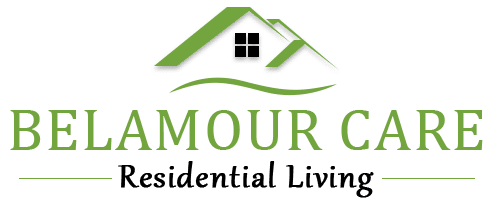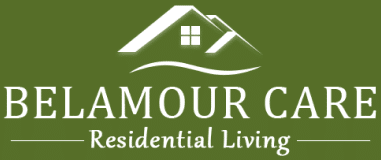Assisted living facilities are vital institutions that offer an ideal blend of personal autonomy and professional care for individuals who require assistance in daily life activities. These facilities ensure that seniors and people with disabilities live a dignified and fulfilling life. Our extensive guide provides you with everything you need to know about assisted living facilities, focusing on the pivotal role that Medicaid Planning Assistance plays.
What are Assisted Living Facilities?
Assisted living facilities serve as a haven for seniors and individuals with disabilities who require assistance with daily activities, such as bathing, dressing, and medication management. These facilities offer residential housing, personalized care, and support services. Unlike nursing homes, assisted living institutions create a homely ambiance that is tailored to sustain an independent lifestyle, combined with personalized care plans.
Benefits of Assisted Living Facilities
Social Interaction and Engagement
Assisted living facilities foster an active and engaging social environment. Structured activities and events are commonplace, promoting interpersonal connections and reducing isolation.
Nutritional Planning and Meal Services
These facilities often include nutritionally balanced meals. Residents can relish a diverse menu of dishes, and nutritional plans can be personalized to accommodate dietary requirements.
Safety and Security
Assisted living facilities are engineered to offer a safe environment. With 24/7 surveillance and emergency response systems, the well-being of the residents is paramount.
Personalized Care and Assistance
Residents receive bespoke care plans that are tailored to their unique requirements. Professionally trained staff are readily available to offer assistance with daily life activities.
Costs Involved in Assisted Living
The costs involved in assisted living facilities can be extensive. Typically, expenses encompass rent, utility bills, meals, and personalized care services. While private pay is a common method, many individuals rely on financial assistance to offset these expenses. Medicaid Planning Assistance is a critical lifeline for many individuals.
Navigating Through Medicaid Planning Assistance
Medicaid Planning Assistance is essential for individuals who need financial aid for assisted living facilities. By strategically planning the use of income and resources, Medicaid Planning Assistance can significantly reduce out-of-pocket expenses for assisted living facilities.
Eligibility Criteria
Eligibility for Medicaid assistance is contingent on income and resource thresholds. Each state has its regulations, and income limits can vary.
Application Process
Applying for Medicaid requires an assembly of essential documentation, including proof of income, assets, and residency. Once compiled, applications must be submitted to the relevant state Medicaid office.
Range of Services Covered
Medicaid can cover a plethora of services in assisted living facilities, including personal care, nursing services, therapy, and medications.
State-Specific Medicaid Policies
Given that Medicaid is a state-administered program, policies regarding assisted living can vary considerably. It’s paramount to comprehend the specific rules and services that are covered under Medicaid in the resident’s home state.
Making an Informed Decision
Selecting an assisted living facility is a monumental decision that requires careful consideration and planning. Understanding the amenities, costs, and financial assistance options, particularly Medicaid Planning Assistance is crucial. This comprehensive insight is designed to equip you with the requisite knowledge and understanding, enabling you to make an informed and confident decision.
In conclusion, assisted living facilities serve as an invaluable resource for seniors and individuals with disabilities. These establishments provide not just a safe and comfortable environment but also promote social interactions and foster a sense of community among residents.
Evaluating Assisted Living Facilities
When evaluating assisted living facilities, it is imperative to assess the quality of care, the array of services offered, and the facility’s environment.
Tour the Facility
It is advisable to tour the facility in person to observe the living conditions, interactions between staff and residents, and the general atmosphere. This hands-on approach provides a deeper insight than simply relying on brochures or websites.
Investigate State Licensing
Ensure that the facility is licensed and meets all the state’s regulatory requirements. Investigate any violations or complaints against the facility through state regulatory agencies.
Discuss Care Plans
Engage in discussions regarding the personalized care plans available. It is essential to ascertain that the facility can meet the specific care needs of the potential resident.
Understand the Cost Structure
Gaining a clear understanding of the cost structure is vital. Ensure you know exactly what is included in the monthly fee and what services might incur additional charges.
Exploring Additional Funding Options
In addition to Medicaid Planning Assistance, it’s important to explore other funding options that can help in mitigating the costs of assisted living facilities.
Long-Term Care Insurance
Long-term care insurance policies often cover the costs of assisted living facilities. It’s prudent to review the policy to comprehend the coverage it offers.
Veterans Benefits
If the prospective resident is a veteran, they might be eligible for benefits through the Department of Veterans Affairs that can be applied towards the costs of assisted living.
Reverse Mortgages
For homeowners, reverse mortgages can be a viable option. This allows the homeowner to convert part of the home equity into cash that can be used to cover the expenses of assisted living.
The Future of Assisted Living Facilities
The landscape of assisted living facilities is ever-evolving. With advancements in technology, there is an increasing emphasis on integrating technological solutions to enhance care. Furthermore, as the population ages, there is a growing demand for more diverse and specialized services within assisted living facilities.
Conclusion
Assisted living facilities are an essential aspect of long-term care, providing seniors and individuals with disabilities a balance between independence and the support they require. Through careful evaluation and by harnessing financial assistance options, particularly Medicaid Planning Assistance, one can make an informed and practical decision that ensures the well-being and contentment of their loved ones.
This guide has endeavored to provide a comprehensive insight into assisted living facilities and the role Medicaid Planning Assistance plays. Armed with this knowledge, it is hoped that readers are empowered in making a decision that is both compassionate and astute.
Contact Belamour Care Residential Living Today
Making the choice for long-term care is a significant step. At Belamour Care Residential Living, they understand the importance of finding a nurturing and supportive environment for one’s loved ones. Their commitment is to provide exceptional care, tailored services, and an enriching community that resonates with warmth and compassion.
One shouldn’t leave the future to chance; taking the decisive step today is crucial. By calling Belamour Care Residential Living at 360-608-9087, individuals can schedule a personalized tour of the facility and let the dedicated team at Belamour assist in navigating through the options that best meet the unique needs of their loved ones.
Belamour Care Residential Living is where the future is shaped with love and excellence.




